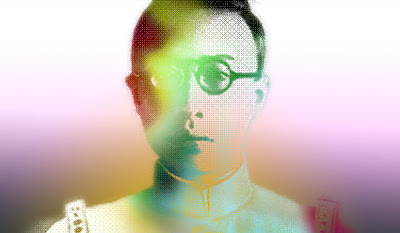The robe - informal in its function, had belonged to the Empress Dowager Cixi and was worn when she was not fulfilling official duties (complex rules and conventions specifying which clothes should be worn on different court occasions were implicitly followed). Its form - illuminated in satin yellow, shimmered like evening sunlight, while beautifully embroidered butterfly’s and cranes revelled amongst the elaborate fauna of the garments folds.
Empress' informal robe, Guangxu reign period (1875-1908)
The Palace Museum, Beijing.
The courtyards, also known as the “Sea of Flagstones” envelop the three great halls that served the Ming and Qing Dynasties as imperial residences and made up the ceremonial heart of the Forbidden City, but with the concessions China has made to modernity and the rush to embrace the western ideal of tourism the mystique has somewhat faded (this cultural erosion was not helped by the opening of a Starbucks coffee shop here in 2000, although due to intense pressure from the Chinese media the shop was closed in 2007).
The old starbucks in The Forbidden City
Inside the city one encounters a myriad of passageways, temples, pagodas, gardens and most noticeably, an endless parade of large wooden doors. This surreal spectacle, resembling a vignette from ‘Alice in Wonderland’ was enhanced by the occasional sighting of smartly dressed museum staff disappearing and reappearing through these portals, all of which only helped to elevate the legend of "Palace of 9,999 and a half rooms" (because only the palace of heaven could have a perfect 10,000).At the heart of the Palace Museum - treasures of delicately carved bowls, gracefully shaped vases and other decorative ornaments made from contrasting shades of jade; elaborately hand-painted porcelain that must have been the envy of any visitor from cosmopolitan Europe and suits of beautifully made armour could all be observed - each object a testament to a lost culture in which time had stood still and where complex rules and procedures were enacted by courtiers with the sole purpose of keeping up the artifice of a dynasty with power.
Entrance to The Forbidden City and Empress Cixi
Two objects exemplified life in this gilded cage. The first; a finely detailed bamboo screen from which it was said, the Dowager Empress Cixi had discreetly received visitors as foreign dignitaries and Chinese of lower cast were not allowed to lay eyes on such a divine personage.
The second object was a black, heavy-framed bicycle, given to the Last Emperor Pu Yi, by his British tutor, Reginald Johnston. At the beginning of the 20th Century the Emperor still lived within the 25-foot fortified violet wall of the Great Within, he was the only male there – except for the 1500 eunuchs of the Manchu court and was rarely allowed to venture beyond the Forbidden City's walls, so to have received this offering must have seen to the Emperor as the essence of western modernity and an escape into another world.
Emperor Pu Yi





No comments:
Post a Comment